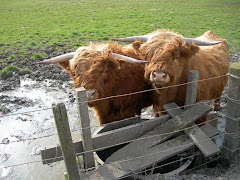Freshwater Eels
Almost all freshwater eels belongs to the fish family called Anguillidae and are in the genus Anguilla. There are 15 to 20 Anguilla species including the American eel (Anguilla rostrata). Many of these ells are important sources of food and are commercially grown on farms, especially in Europe.
Few of the Anguilla species are available in the aquarium hobby, however. Probably the most common freshwater eels in the hobby are from the genus Mastacembelidae which are not true eels but classified as spiny eels.The fire and the tire track eels are well-known members of this family available to hobbyists.
The fire eel (Mastacembelus erythrotaenia) comes from South Asia (Thailand through Indochina). The fire eels dark gray to dull black and has red and yellow horizontal stripes that extend from the head to the tail and look a bit like the fire flames painted on a hot rod. This coloration is how the eel got its common name.
The fire eel can reach a length of almost 40 inches in the wild, but aquarium specimens are usually much shorter but still large. This fish needs a large tank with a 55-gallon minimum tank size. Water should be a neutral pH and around 76 degrees Fahrenheit.
As with most freshwater eels, the fire eel prefers to dig and hide in the aquarium substrate. The tank should have a soft sand bottom substrate and flat to rounded rocks without sharp edges under which the eels can hide. Lava rock is not a good choice for an aquarium containing eels.
The fire eel is nocturnal, but can be trained to come out during the day to feed. In fact, a trait common to most eels, freshwater and saltwater, is that they can be trained to eat right from the aquarist's hand. However, eels have poor eyesight and it is not unusual for them to literally bite the hand that feeds them. This is not an aggressive behavior, but the result of poor aim on the part of the eel. Good choices for feed include beef heart, worms and cut fish and shrimp.
Another common freshwater eel is the tire track eel (Mastacembelus armatus). This eel grows large and, in many cases, is mean and aggressive. The common name comes from the color pattern on the sides of the fish that resembles the track of a fire. But this fish may run over any fish that gets in its way.
Most aquarium specimens start at about 6 to 10 inches, but they quickly double or triple in size. Chances are they will start looking at tankmates as swimming morsels of food rather than neighbors. This fish will need lot of room-an aquarium at least 75 gallons-and large tankmates.
They don't seem particular about water quality other than the normal values for nitrogenous waste, neutral pH and water temperature in the mid 70s Fahrenheit. Feeding is easy as they will eat most anything such as beef heart, bloodworms, insects, frozen food and cut seafood.
We hope that this guide was of help to you and your hobby.
Also, please see information on saltwater eels.
THANK YOU...
Alex has been involved in the pet industry for over 20 years. Starting in a partnership of a full line pet store, until he opened his own store and expended it to 3 locations. His involvement and sponsorship of various pet clubs as well as donations to a variety of rescue organizations, has helped a number of pets and their owners to enjoy a long lasting relationship. As the result, his extensive experience and knowledge of animals and pet supplies is shared through these articles.
E-Pets by Royal.com
http://www.e-petsbyroyal.com/
Article Source: http://EzineArticles.com/?expert=Alex_Royal
Subscribe to:
Post Comments (Atom)









A fishing trip is a great way to escape the hustle and bustle of city life and get back to nature and discover what is really important in life. And what better way to become closer as a business group, couple or family? However, you want to make sure that your fishing trip, and in particular the fishing lodge, matches your expectations.
ReplyDeleteClcik Here